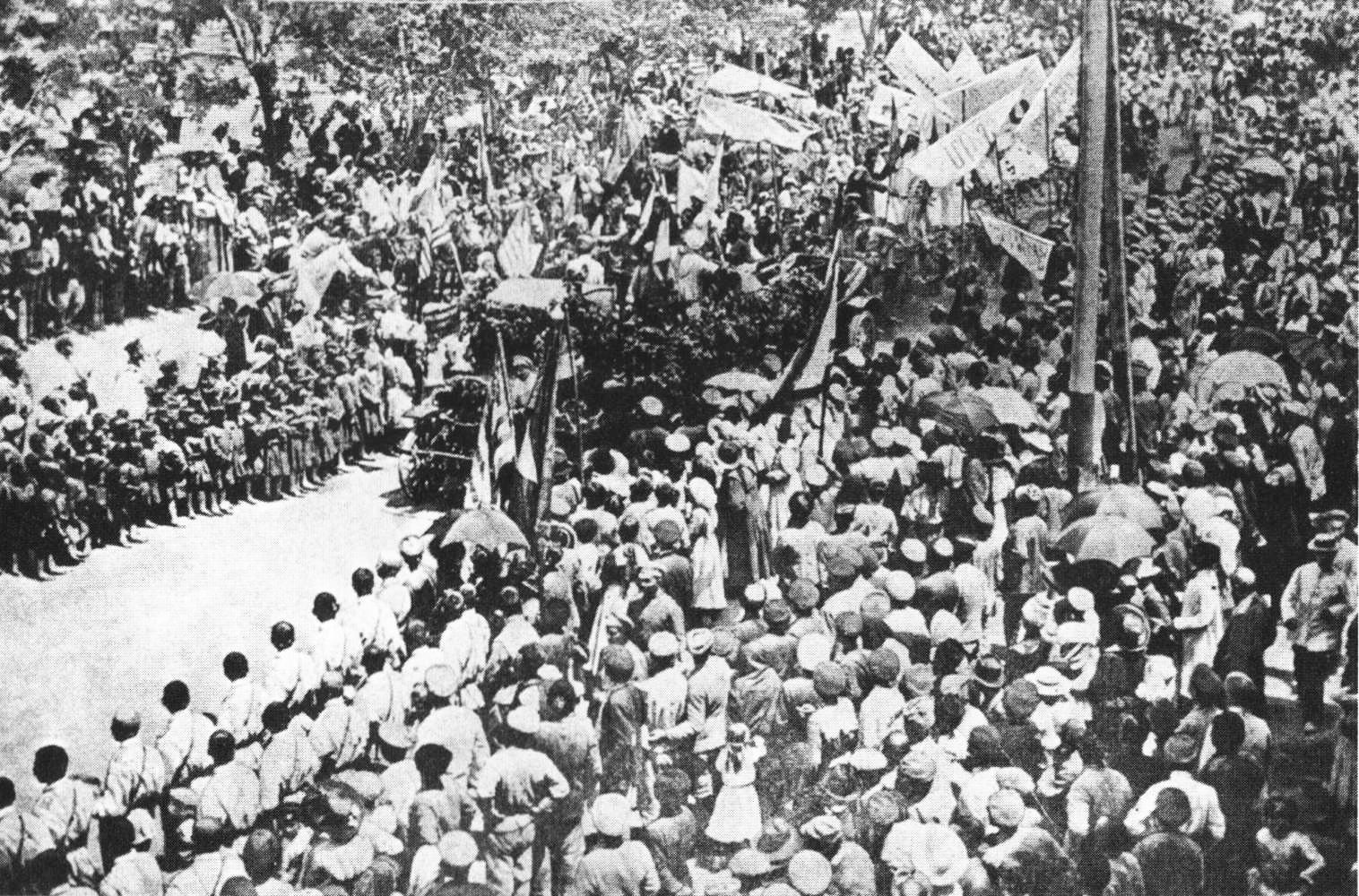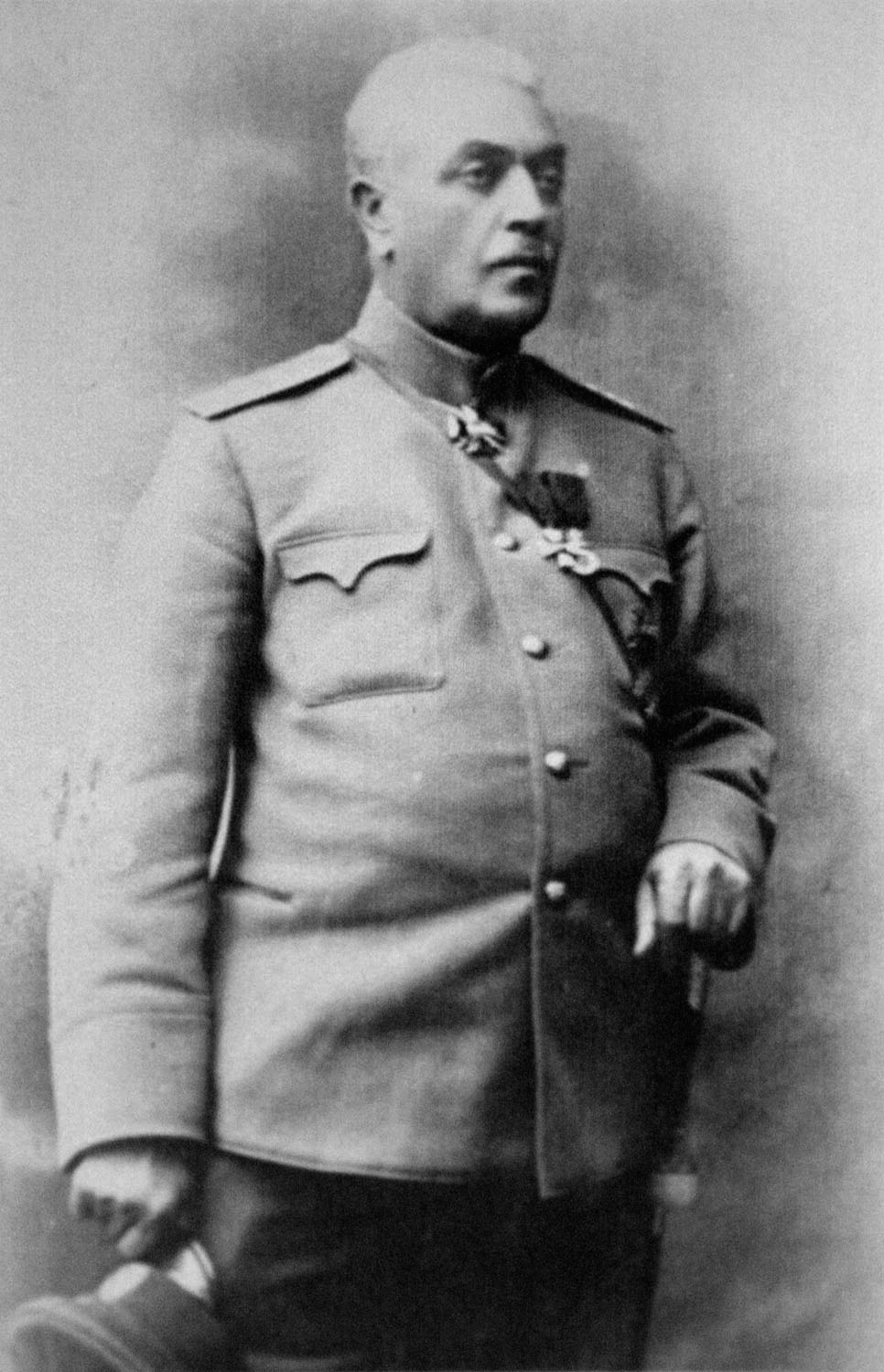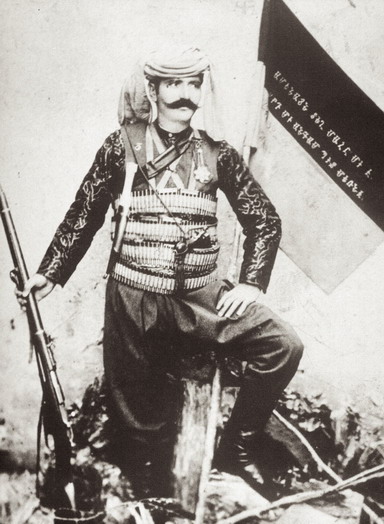|
Republic Day (Armenia)
Republic Day ( hy, Հանրապետության օր, translit=Hanrapetut’yan or) is a national holiday in Armenia marking the anniversary of the First Armenian Republic in 1918. It is commonly celebrated with fireworks, concerts, parades, and parties. It is considered to be the national day of Armenia. History Shortly after the start of the First World War, the Ottoman Empire began forcible expulsion of Armenians from the empire. Women, children and elderly people were forced to leave Armenia and go to Syria and Russia. 1 to 1.5 million people were killed in what is now known as the Armenian genocide. Following the genocide, the Armenian National Council Declared its sovereignty on 28 May 1918. Armenia was proclaimed an independent republic on May 28, 1918. The republic immediately experienced massive hunger, and a massive influx of refugees. The republic was short lived, and as of December 2, 1920, the Red Army invaded Armenia and proclaimed it a Soviet Republic. Armeni ... [...More Info...] [...Related Items...] OR: [Wikipedia] [Google] [Baidu] |
First Armenian Republic
The First Republic of Armenia, officially known at the time of its existence as the Republic of Armenia ( hy, Հայաստանի Հանրապետութիւն), was the first modern Armenian state since the loss of Armenian statehood in the Middle Ages. The republic was established in the Armenian-populated territories of the disintegrated Russian Empire, known as Eastern Armenia or Russian Armenia. The leaders of the government came mostly from the Armenian Revolutionary Federation (ARF or Dashnaktsutyun). The First Republic of Armenia bordered the Democratic Republic of Georgia to the north, the Ottoman Empire to the west, Persia to the south, and the Azerbaijan Democratic Republic to the east. It had a total land area of roughly 70,000 km2, and a population of 1.3 million. The Armenian National Council declared the independence of Armenia on 28 May 1918. From its very onset, Armenia was plagued with a variety of domestic and foreign issues. A humanitarian crisis emerged ... [...More Info...] [...Related Items...] OR: [Wikipedia] [Google] [Baidu] |
Red Army Invasion Of Armenia
The Red Army invasion of Armenia, also known as the Sovietization or the Soviet invasion of Armenia, the Soviet occupation of Armenia, or Soviet intervention in Armenia was a military campaign which was carried out by the 11th Army of Soviet Russia from September to 29 November 1920 in order to install a new Soviet government in the First Republic of Armenia, a former territory of the Russian Empire. The invasion coincided with two concurrent events, the Turkish invasion, as well as the anti-government insurrection which was staged by the local Armenian Bolsheviks in the capital, Yerevan, and other cities and populated places within the country. The invasion led to the dissolution of the First Republic of Armenia and the establishment of the Armenian Soviet Socialist Republic. Background The governing party of Armenia was “Dashnaktsutyun” with socialist-nationalist views. The government of Armenia was west-oriented, which was mainly reasoned by the fact that U.S. Presiden ... [...More Info...] [...Related Items...] OR: [Wikipedia] [Google] [Baidu] |
Prime Minister Of Armenia
The prime minister of Armenia is the head of government and most senior minister within the Government of Armenia, Armenian government, and is required by the constitution to "determine the main directions of policy of the Government, manage the activities of the Government and coordinate the work of the members of the Government." Also, according to the constitution, the prime minister heads the Security Council, which prescribes the main directions of the country's defense policy; thus, the prime minister is effectively the commander-in-chief of the Armed Forces of Armenia. Under the new 2015 constitution, the prime minister is the most powerful and influential person in Armenian politics. The prime minister is appointed by the president of Armenia upon the vote of the National Assembly (Armenia), National Assembly. The prime minister can be removed by a motion of no confidence, vote of no confidence in National Assembly (Armenia), Parliament. In the 2015 Armenian constitutional ... [...More Info...] [...Related Items...] OR: [Wikipedia] [Google] [Baidu] |
President Of Armenia
The president of Armenia ( hy, Հայաստանի Նախագահ, Hayastani Nakhagah) is the head of state and the guarantor of independence and territorial integrity of Armenia elected to a single seven-year term by the National Assembly of Armenia. Under Armenia's parliamentary system, the president is simply a figurehead and holds ceremonial duties, with most of the political power vested in the Parliament and prime minister. Vahagn Khachaturyan has been serving as president since 13 March 2022. __TOC__ Background The president of the republic strives to uphold the constitution, and to ensure the regular functioning of the executive and judicial powers. They are the guarantor of the independence, territorial integrity and security of the republic. The president of the republic is immune: they cannot be prosecuted or held liable for actions arising from their status during and after their term of office. For the actions not connected with their status the president of the Re ... [...More Info...] [...Related Items...] OR: [Wikipedia] [Google] [Baidu] |
Military Of The Ottoman Empire
The military of the Ottoman Empire ( tr, Osmanlı İmparatorluğu'nun silahlı kuvvetleri) was the armed forces of the Ottoman Empire. Army The military of the Ottoman Empire can be divided in five main periods. The foundation era covers the years between 1300 (Byzantine expedition) and 1453 (Conquest of Constantinople), the classical period covers the years between 1451 (second enthronement of Sultan Mehmed II) and 1606 (Peace of Zsitvatorok), the reformation period covers the years between 1606 and 1826 ( Vaka-i Hayriye), the modernisation period covers the years between 1826 and 1858 and decline period covers the years between 1861 (enthronement of Sultan Abdülaziz) and 1918 (Armistice of Mudros). The Ottoman army is the forerunner of the Turkish Armed Forces. Foundation period (1300–1453) The earliest form of the Ottoman military was a steppe-nomadic cavalry force.Mesut Uyar, Edward J. Erickson, ''A Military History of the Ottomans: From Osman to Atatürk'', Pleager ... [...More Info...] [...Related Items...] OR: [Wikipedia] [Google] [Baidu] |
Battle Of Sardarabad
The Battle of Sardarabad ( hy, Սարդարապատի ճակատամարտ, translit=Sardarapati chakatamart; tr, Serdarabad Muharebesi) was a battle of the Caucasus campaign of World War I that took place near Sardarabad, Armenia, from 21 to 29 May 1918, between the regular Armenian military units and militia on one side and the Ottoman army that had invaded Eastern Armenia on the other. As Sardarabad is approximately west of the capital of Yerevan, the battle not only halted the Ottoman advance into the rest of Armenia, but also prevented the complete destruction of the Armenian nation. In the words of Christopher J. Walker, had the Armenians lost this battle, "it is perfectly possible that the word Armenia would have henceforth denoted only an antique geographical term". Background Ottoman invasion of Eastern Armenia After the October Revolution of 1917 in Russia and the ceasefire signed between the Third Army of the Ottoman Empire and the Transcaucasian Commissaria ... [...More Info...] [...Related Items...] OR: [Wikipedia] [Google] [Baidu] |
Armenian Fedayi
''Fedayi'' (Western hy, Ֆէտայի ''Fedayi''; Eastern hy, Ֆիդայի ''Fidayi''), also known as the Armenian irregular units or Armenian militia, were Armenian civilians who voluntarily left their families to form self-defense units and irregular armed bands in reaction to the mass murder of Armenians and the pillage of Armenian villages by criminals, Kurdish gangs, Turkish forces, and Hamidian guards during the reign of Ottoman Sultan Abdul Hamid II in late 19th and early 20th centuries, known as the Hamidian massacres. Their ultimate goal was always to gain Armenian autonomy ( Armenakans) or independence (Dashnaks, Hunchaks) depending on their ideology and the degree of oppression visited on Armenians. Some of the key Fedayi figures also participated in the Iranian Constitutional Revolution that commenced during the same period, upon agreement of the ARF leaders. The Armenian term ''fedayi'' is ultimately derived from Arabic fedayeen: ''fidā'īyūn'', literally me ... [...More Info...] [...Related Items...] OR: [Wikipedia] [Google] [Baidu] |
Garegin Nzhdeh
Garegin Ter-Harutyunyan, better known by his ''nom de guerre'' Garegin Nzhdeh ( hy, Գարեգին Նժդեհ, ; 1 January 1886 – 21 December 1955), was an Armenian statesman, military commander and political thinker. As a member of the Armenian Revolutionary Federation, he was involved in the national liberation struggle and revolutionary activities during the First Balkan War and World War I and became one of the key political and military leaders of the First Republic of Armenia (1918–1921). He is widely admired as a charismatic national hero by Armenians. In 1921, he was a key figure in the establishment of the Republic of Mountainous Armenia, an anti-Bolshevik state that became a key factor that led to the inclusion of the province of Syunik into Soviet Armenia. During World War II, he cooperated with Nazi Germany, hoping to secure Soviet Armenia's existence in case of Germany's victory over USSR and a potential Turkish invasion of the Caucasus. Following an abortive ... [...More Info...] [...Related Items...] OR: [Wikipedia] [Google] [Baidu] |
Andranik
Andranik Ozanian, commonly known as General Andranik or simply Andranik;. Also spelled Antranik or Antranig 25 February 186531 August 1927), was an Armenian military commander and statesman, the best known '' fedayi'' and a key figure of the Armenian national liberation movement. From the late 19th century to the early 20th century, he was one of the main Armenian leaders of military efforts for the independence of Armenia. He became active in an armed struggle against the Ottoman government and Kurdish irregulars in the late 1880s. Andranik joined the Armenian Revolutionary Federation (Dashnaktustyun) party and, along with other '' fedayi'' (militias), sought to defend the Armenian peasantry living in their ancestral homeland, an area known as Western (or Turkish) Armeniaat the time part of the Ottoman Empire. His revolutionary activities ceased and he left the Ottoman Empire after the unsuccessful uprising in Sasun in 1904. In 1907, Andranik left Dashnaktustyun because he ... [...More Info...] [...Related Items...] OR: [Wikipedia] [Google] [Baidu] |
Yerevan
Yerevan ( , , hy, Երևան , sometimes spelled Erevan) is the capital and largest city of Armenia and one of the world's List of oldest continuously inhabited cities, oldest continuously inhabited cities. Situated along the Hrazdan River, Yerevan is the administrative, cultural, and industrial center of the country, as its primate city. It has been the Historical capitals of Armenia, capital since 1918, the Historical capitals of Armenia, fourteenth in the history of Armenia and the seventh located in or around the Ararat Plain. The city also serves as the seat of the Araratian Pontifical Diocese, which is the largest diocese of the Armenian Apostolic Church and one of the oldest dioceses in the world. The history of Yerevan dates back to the 8th century BCE, with the founding of the fortress of Erebuni Fortress, Erebuni in 782 BCE by King Argishti I of Urartu, Argishti I of Urartu at the western extreme of the Ararat Plain. Erebuni was "designed as a great administrative an ... [...More Info...] [...Related Items...] OR: [Wikipedia] [Google] [Baidu] |
Matenadaran
The Matenadaran ( hy, Մատենադարան), officially the Mesrop Mashtots Institute of Ancient Manuscripts, is a museum, repository of manuscripts, and a research institute in Yerevan, Armenia. It is the world's largest repository of Armenian manuscripts. It was established in 1959 on the basis of the nationalized collection of the Armenian Church, formerly held at Etchmiadzin. Its collection has gradually expanded since its establishment, mostly from individual donations. One of the most prominent landmarks of Yerevan, it is named after Mesrop Mashtots, the inventor of the Armenian alphabet, whose statue stands in front of the building. Name The word մատենադարան, ''matenadaran'' is a compound composed of մատեան, ''matean'' ("book" or "parchment") and դարան, ''daran'' ("repository"). According to Hrachia Acharian both words are of Middle Persian (Pahlavi) origin. Though it is sometimes translated as "scriptorium" in English, a more accurate translation i ... [...More Info...] [...Related Items...] OR: [Wikipedia] [Google] [Baidu] |
Flag Of Armenia
The national flag, national flag of Armenia, the Armenian Tricolour, consists of three horizontal bands of equal width, red on the top, blue in the middle, and apricot (color), apricot on the bottom. The Armenian Supreme Soviet adopted the current flag on 24 August 1990. On 15 June 2006, the Law on the National Flag of Armenia, governing its usage, was passed by the Azgayin Zhoghov, National Assembly of Armenia. Throughout history, there have been many variations of the Armenian flag. In ancient times, Armenian dynasties were represented by different symbolic animals displayed on their flags. In the twentieth century, various Soviet Union, Soviet flags represented the Armenian SSR. The meanings of the colors are interpreted in many different ways. The red stands for the Armenian Highland, Armenian Highlands, the Armenian people's continued Armenian genocide, struggle for survival, maintenance of the Armenian Apostolic Church, Christian faith and Armenia's independence and freedom ... [...More Info...] [...Related Items...] OR: [Wikipedia] [Google] [Baidu] |





.png)


.jpg)